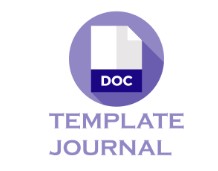STRUKTUR KOMUNITAS PLANKTON PADA KOLAM TANAH DAN KOLAM BETON BUDIDAYA IKAN NILA (Oreochromis niloticus, Linnaeus) DI UPTD-PBAPL KARANG INTAN, DESA JINGAH HABANG KECAMATAN KARANG INTAN KABUPATEN BANJAR, KALIMANTAN SELATAN
STRUCTURE OF THE PLANKTON COMMUNITY IN LAND AND CONCRETE POOLS FOR TILAPIA FISH (Oreochromis niloticus, Linnaeus) CULTIVATION AT UPTD-PBAPL KARANG INTAN, JINGAH HABANG VILLAGE, KARANG INTAN DISTRICT, BANJAR DISTRICT, SELATAN KALIMANTAN
Abstract
Ikan Nila (Oreochromis niloticus, Linnaeus) merupakan ikan konsumsi yang memiliki tingkat pertumbuhan cepat dan mudah dikembangbiakkan dalam budidaya serta tahan terhadap perubahan kondisi lingkungan yang salah satu pakannya diambil dari pakan alami yaitu plankton. Oleh karena itu, ikan nila biasanya dibudidayakan oleh masyarakat dengan media kolam, baik kolam tanah dan kolam beton. Tujuan dari penelitian ini untuk mengetahui struktur komunitas plankton pada kolam tanah dan kolam beton budidaya ikan nila, mengetahui kesesuaian kualitas air pada kolam budidaya ikan nila untuk kehidupan plankton dan mengetahui perbedaan struktur komunitas plankton antara kolam tanah dan kolam beton budidaya ikan nila. Data yang diambil berupa data kualitas air dan analisis plankton. Analisi data yang digunakan dalam perhitungan struktur komunitas plankton adalah uji t untuk kelimpahan plankton (N), indeks keanekaragaman (H’), indeks keseragaman (E) dan indeks dominasi (D). Hasil dari perhitungan menunjukkan bahwa terdapat perbedaan untuk nilai N pada fitoplankton antar kedua kolam, sedangkan pada nilai H’, E dan D tidak menunjukkan ada perbedaan antar kedua kolam. Untuk nilai N, H’ dan E pada zooplankton menunjukkan ada perbedaan antar kedua kolam, akan tetapi untuk nilai D tidak menunjukkan adanya perbedaan. Selanjutnya, variabel kualitas air yang diukur meliputi kecerahan, suhu, pH, DO, BOD, nitrat (NO3) dan fosfat (PO4) dengan hasil bahwa variabel DO dan BOD masih belum sesuai untuk kehidupan plankton.
Nila fish or Tilapia (Oreochromis niloticus, Linnaeus) is a consumable fish that has a fast growth rate and is easy to breed in cultivation and is resistant to changes in environmental conditions, one of which is taken from natural feed, namely plankton. Therefore, tilapia is usually cultivated by the community with pond media, both ground ponds and concrete ponds. The purpose of this study is to determine the structure of plankton communities in soil ponds and concrete ponds for tilapia farming, determine the suitability of water quality in tilapia farming ponds for plankton life and find out the differences in plankton community structure between soil ponds and tilapia farming concrete ponds. The data taken are water quality data and plankton analysis. The data analysis used in the calculation of the structure of plankton communities is the t test for plankton abundance (N), diversity index (H'), uniformity index (E) and dominance index (D). The results of the calculations showed that there was a difference for the value of N in phytoplankton between the two pools, while the values of H', E and D did not show any difference between the two pools. The N, H' and E values in zooplankton show that there is a difference between the two pools, but the value of D does not indicate a difference. Furthermore, the measured water quality variables include temperature, brightness, pH, DO, BOD, nitrate (NO3) and phosphate (PO4) variables with the result that the DO and BOD variables are still not suitable for plankton life.
References
Usman, M.S., J.D Kusen, Joice R.T.S.L Rimper. 2013. Struktur Plankton di Perairan Pulau Bangka Kabupaten Minahasa Utara. Jurnal Pesisir Laut Trofis, Volume 2 Nomor 1: 51-57.
Utomo,Y., Bambang Priyono, Sri Ngabekti. 2013. Saprobitas Perairan Sungai Juwana Berdasarkan Bioindikator Plankton. Unnes Journal Of Life Science, Volume 2(1).
Wijayanti, K.A.N., Murwantoko, Indah .I. 2021. Struktur Komunitas Plankton pada Air Kolam Ikan Lele yang Berbeda Warna. Jurnal Perikanan UGM Vol. 23 (1): 45-54.





